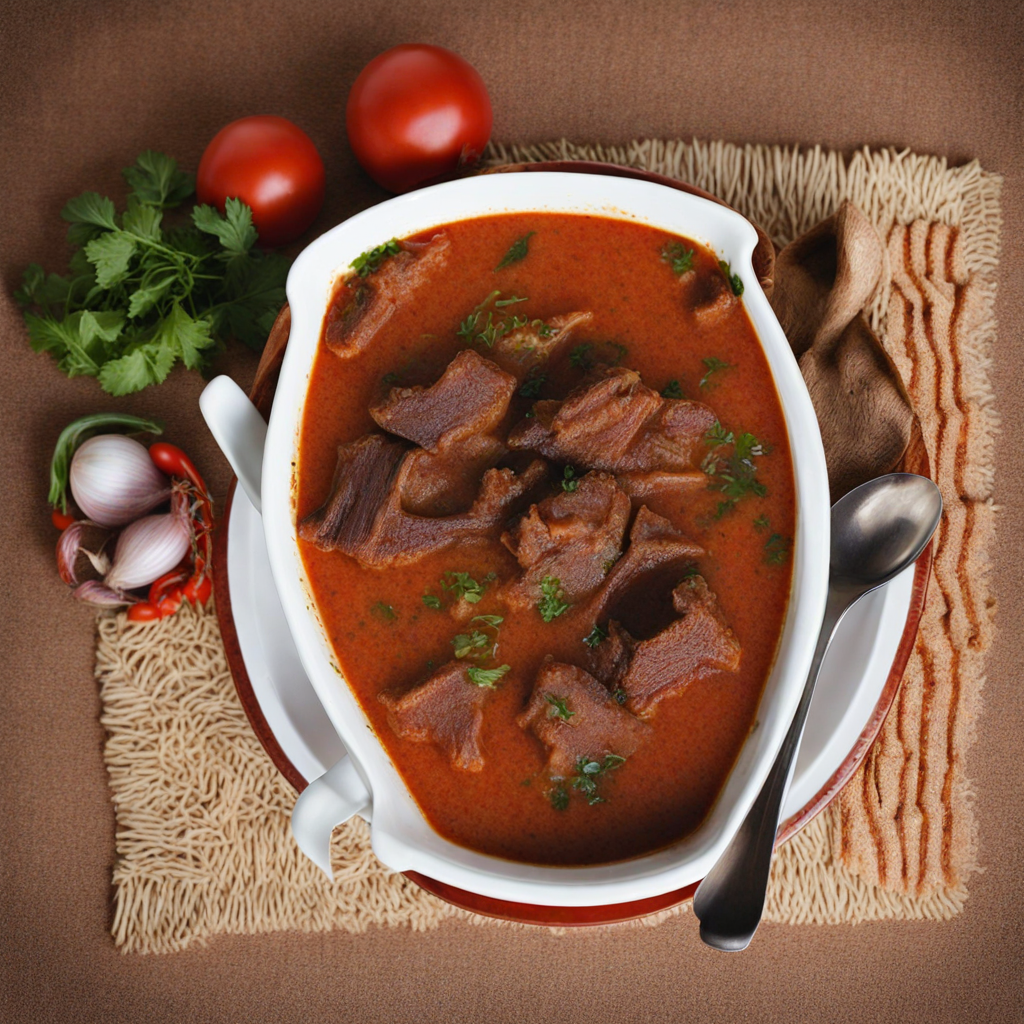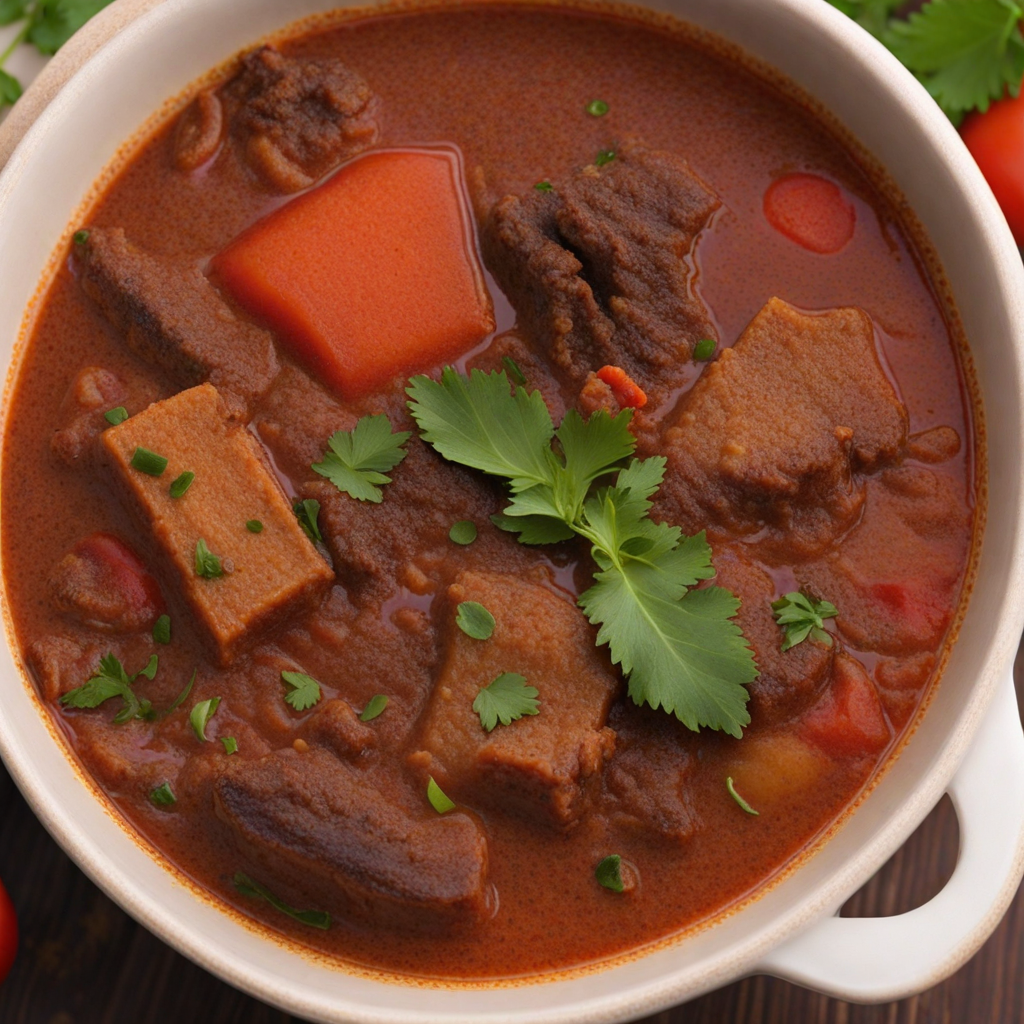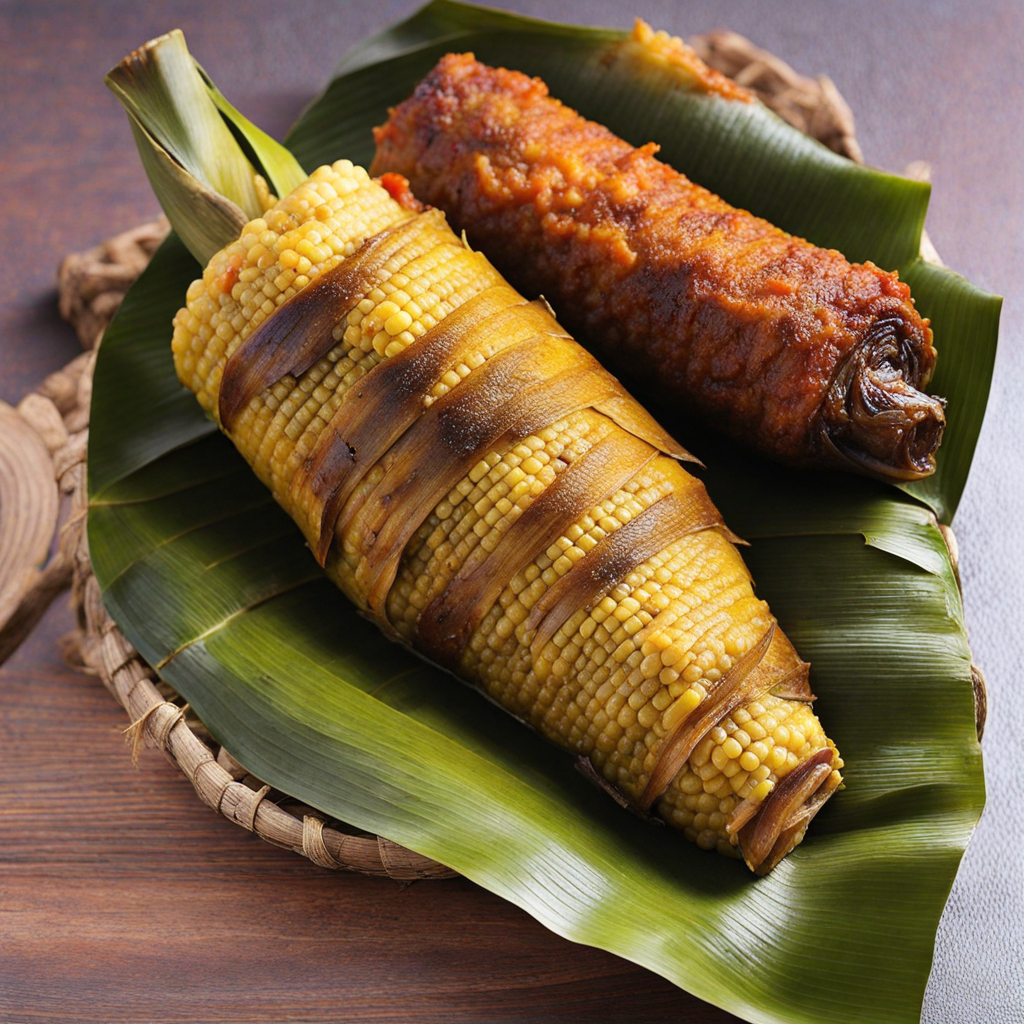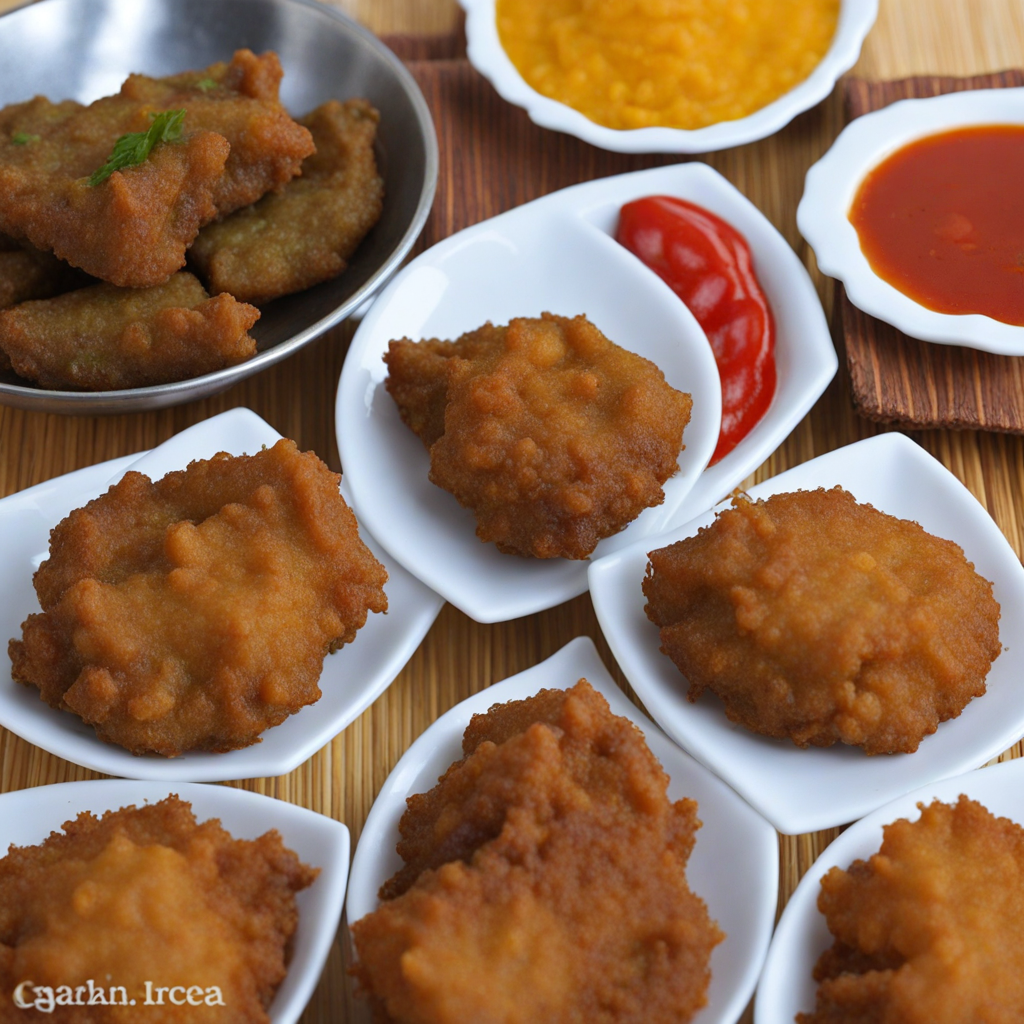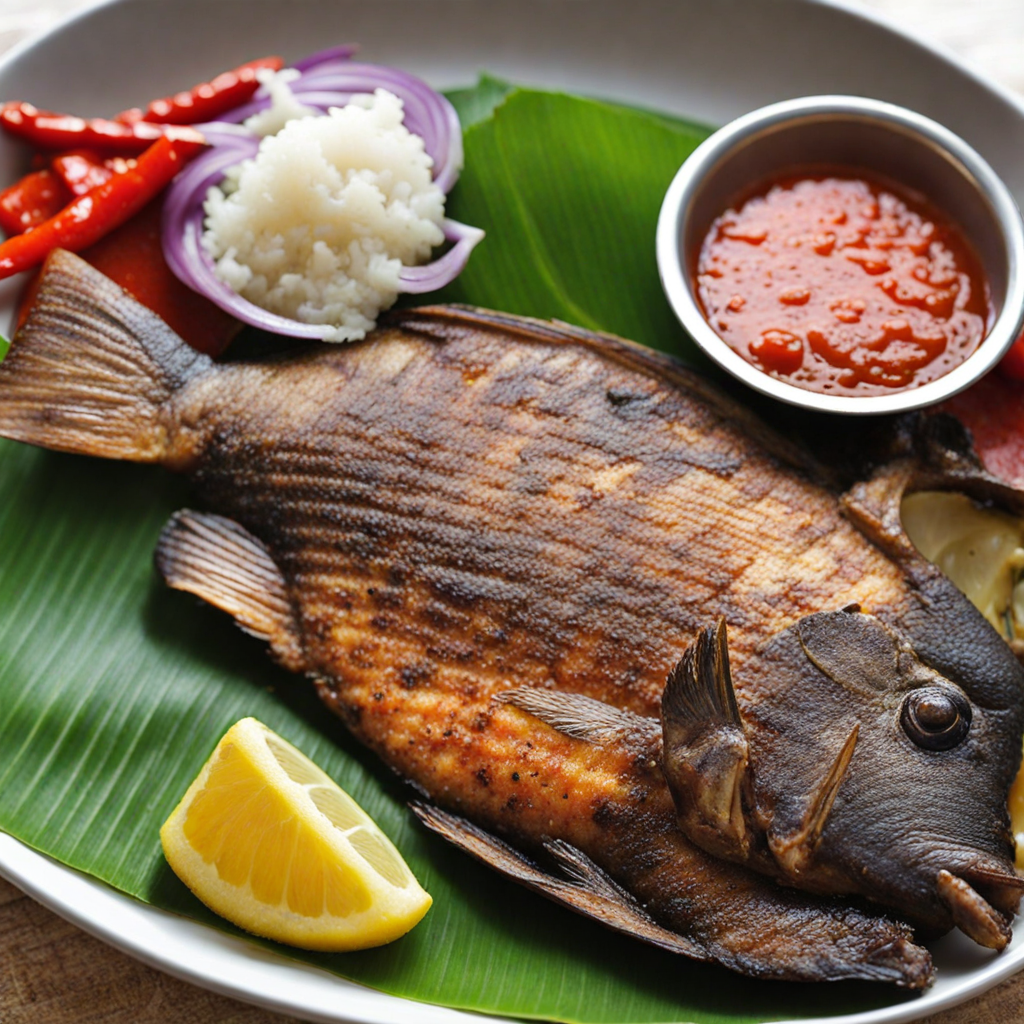Goat Light Soup
Goat Light Soup, known as "Nkwan" in some Ghanaian dialects, is a beloved dish that showcases the rich culinary traditions of Ghana. This soup is characterized by its light yet flavorful broth, made from tender goat meat, which is simmered to perfection. The cooking process allows the natural flavors of the meat to infuse the broth, creating a comforting and aromatic base. Unlike heavier soups, Goat Light Soup is often enjoyed for its refreshing quality, making it a perfect dish for any occasion, whether as a starter or a main course. One of the key features of Goat Light Soup is its unique blend of spices and ingredients. The soup typically includes a medley of local spices such as ginger, garlic, and pepper, along with fresh herbs like basil and thyme. This combination not only enhances the flavor but also provides a subtle heat that awakens the palate. Additionally, ingredients like onions and tomatoes are often added to enrich the broth, while a sprinkle of salt rounds off the taste, resulting in a dish that is both savory and satisfying. Goat Light Soup is often served with a variety of sides, such as fufu, rice, or even boiled plantains, allowing diners to customize their experience. The tender chunks of goat meat paired with the light, fragrant soup create a delightful balance that is both nourishing and delicious. Whether enjoyed at a family gathering or in a local eatery, Goat Light Soup is a heartwarming dish that invites food lovers to explore the vibrant flavors of Ghanaian cuisine.
How It Became This Dish
The Rich History of Nkatenkwan: A Culinary Jewel of Ghana Nkatenkwan, often referred to as groundnut soup, is a beloved dish that holds a special place in the culinary landscape of Ghana. This dish, made primarily from groundnuts (peanuts) and often accompanied by meat or fish, serves as a symbol of both cultural identity and communal practices among various ethnic groups in Ghana. Its journey from humble origins to a staple dish enjoyed by many reflects the rich tapestry of Ghanaian heritage and the evolution of its gastronomy. #### Origins of Nkatenkwan The roots of Nkatenkwan can be traced back to the agricultural practices of the Akan people, who are among the largest ethnic groups in Ghana. Groundnuts, native to South America, were introduced to West Africa via the transatlantic slave trade and subsequent trade routes. Their adaptability to the African climate allowed them to flourish, and they quickly became a vital crop. The Akan people and other ethnic groups recognized the nutritional value of groundnuts, which are rich in protein, healthy fats, and essential vitamins. The preparation of Nkatenkwan likely evolved from early cooking methods that incorporated native ingredients and techniques. While the soup itself may have origins in the Akan culinary tradition, variations of groundnut soup can also be found in other cultures across West Africa, suggesting a shared culinary heritage influenced by trade and migration. The name "Nkatenkwan" itself derives from the Akan language, where "nkate" means peanut, and "nkwan" means soup, clearly indicating the dish's primary ingredient. #### Cultural Significance Nkatenkwan is more than just a meal; it embodies the communal values of sharing and hospitality that are integral to Ghanaian culture. The dish is often prepared during special occasions such as weddings, festivals, and religious ceremonies, marking important moments in the lives of individuals and communities. When served, Nkatenkwan is typically accompanied by fufu (a starchy side made from cassava, yam, or plantain), rice, or boiled plantains, creating a wholesome and satisfying meal that brings people together. The soup's preparation is often a communal activity. Families gather to cook, share stories, and bond over the process, reinforcing relationships and fostering a sense of belonging. This communal aspect is particularly important in Ghanaian culture, where food serves as a medium for connection. Nkatenkwan has also found its way into street food culture, where vendors serve it in vibrant markets, allowing even those with limited means to enjoy this rich dish. #### Development Over Time Over the years, Nkatenkwan has evolved in its preparation and presentation, adapting to changing tastes and the availability of ingredients. Originally, the soup was prepared with simple ingredients: groundnuts, water, and sometimes local spices or seasonings. However, as Ghanaian cuisine has developed, so too has Nkatenkwan. Today, many variations exist, with cooks experimenting by adding different meats such as chicken, goat, or fish, and incorporating vegetables such as tomatoes, onions, and peppers. The introduction of spices like ginger and chili pepper adds layers of flavor, making Nkatenkwan a versatile dish that can be tailored to individual preferences. This evolution reflects not only culinary creativity but also the influence of globalization, as access to diverse ingredients has expanded through trade and migration. Additionally, Nkatenkwan has gained recognition beyond Ghana, becoming a dish that represents Ghanaian cuisine on the global stage. As the Ghanaian diaspora expands, Nkatenkwan is often included in cultural festivals, food fairs, and restaurants, allowing people from different backgrounds to experience and appreciate its rich flavors and cultural significance. #### Nutritional Aspects and Modern Interpretations In contemporary times, Nkatenkwan is also celebrated for its nutritional benefits. Groundnuts are a source of protein and healthy fats, making the soup a nutritious option for families. Health-conscious cooks have begun to modify traditional recipes to reduce fat content or increase vegetable inclusion, reflecting a growing awareness of dietary health. The rise of vegetarian and vegan diets has also led to adaptations of Nkatenkwan, where meat is replaced with plant-based proteins or additional vegetables, ensuring that the dish remains relevant in the context of modern dietary trends. This adaptability has contributed to Nkatenkwan's enduring popularity, as it caters to a diverse audience while maintaining its cultural roots. #### Nkatenkwan in Contemporary Ghana In modern Ghana, Nkatenkwan continues to thrive both in homes and restaurants. It remains a popular dish among all age groups, often featured on menus of traditional and contemporary eateries. The soup is frequently served at gatherings, reinforcing its role as a dish that fosters community. Annual food festivals in Ghana also celebrate traditional dishes like Nkatenkwan, allowing chefs to showcase their unique takes on the recipe while honoring its cultural heritage. Moreover, social media has played a significant role in the resurgence of interest in traditional Ghanaian foods, including Nkatenkwan. Food bloggers and influencers have highlighted the dish, sharing recipes, cooking tips, and personal stories that connect it to cultural identity. This digital visibility has sparked conversations about the importance of preserving traditional culinary practices while also embracing innovation. #### Conclusion Nkatenkwan is more than just a soup; it is a reflection of Ghana's rich cultural heritage and its people's resilience and adaptability. From its origins with the Akan people to its modern interpretations in homes and restaurants, Nkatenkwan embodies the spirit of togetherness and the importance of community in Ghanaian society. As it continues to evolve, Nkatenkwan serves as a reminder of the power of food to connect individuals, celebrate traditions, and tell stories that transcend time and space. In the grand tapestry of Ghanaian cuisine, Nkatenkwan stands out as a culinary jewel, inviting both Ghanaians and the world to savor its rich flavors and the cultural significance that it carries. Through each bowl of Nkatenkwan, one tastes the history of a people and the warmth of their shared experiences, making it a dish worthy of celebration for generations to come.
You may like
Discover local flavors from Ghana


